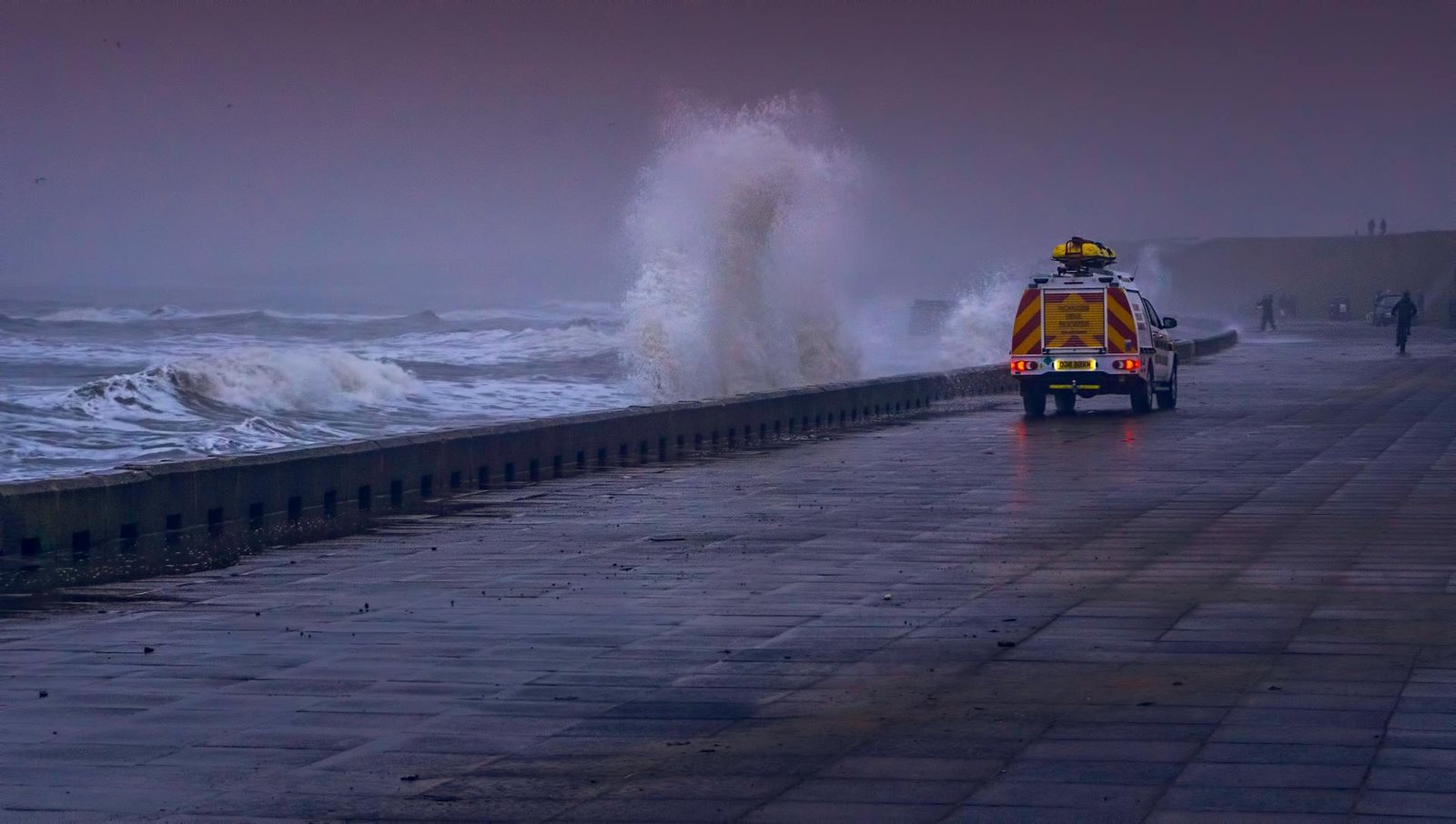President Donald Trump declared a state of emergency in Kentucky on Sunday, February 16, 2025, following destructive storms that caused severe flooding. The flooding led to the deaths of no less than nine individuals in Kentucky and one person in Georgia. Aside from the devastating loss of life, the storms plunged tens of thousands of residents into darkness, and many are still coping with water-related problems, such as a boil water advisory.
The flooding was catastrophic, compelling emergency responders into action to rescue victims of the rising waters. Conditions are still dire, and recovery is set to take a long time.
Heavy Rainfall Triggers Flash Flooding Across Kentucky
The severe weather that hit Kentucky on Saturday and into Sunday morning delivered an enormous amount of precipitation. In a number of areas, over six inches of rain fell, suffocating local drainage systems and causing flash flooding.
The torrential rain wrought havoc, inundating roads, buildings, and infrastructure, the NWS reported. Flooding disrupted travel because many roads were impassable, and many buildings were waterlogged. The unexpected storm system overwhelmed many areas, and emergency response units were compelled to move quickly to save individuals in peril.
Loss of Life and Continued Rescue Operations
Governor Andy Beshear confirmed Sunday evening that fatalities from the storms had increased to at least nine people in Kentucky.
The deaths were brought about mainly by people being pinned down in their vehicles by the rising floodwaters.
Among the fatalities was a mother and her 7-year-old daughter, who both died unfortunately. As floodwaters rose quickly, many individuals were unable to get out of their cars in time, and emergency responders had to make immediate rescues.
Over all, over 1,000 rescues have been completed to date, and 19 rescue teams are currently active and ongoing on the ground. Crews from adjacent states, Kentucky National Guard troops, and state troopers are all participating in the response effort as well.
Power Outages and Water Shortages Complicate the Situation
By Sunday afternoon, over 39,000 individuals in Kentucky had lost power, denying numerous residents of basic utilities like electricity and heat in the cold. Also, approximately 9,800 residents had no water, while an estimated 21,000 residents were under boil water advisory because of water contamination fears.
The deprivation of electricity and clean water has only added to the already harsh conditions, and recovery is hampered by the absence of basic services. Most of the flooded regions lack clean drinking water, which is an acute public health concern.
Flooding and Winter Weather: Ongoing Threats to Kentucky
Although the rain that led to the initial flooding has stopped, the conditions are still perilous. Flood warnings remain in effect throughout Kentucky, as rivers and streams that were swollen due to the torrential rains continue to rise, threatening more areas to flood.
The National Weather Service is watching closely, as the danger of more flooding persists. Aside from the flooding issues, winter weather advisories have also been issued due to up to two inches of snow in some areas, together with gusty winds. All this cold will add to recovery efforts and hinder any immediate assistance for those that remain stranded or are still flooded. Once the storm system exits, freezing conditions are anticipated, further exacerbating the situation for those already having a hard time.
Other Neighboring States Also Suffer from Severe Weather
The impact of the storm was not confined to Kentucky only. Neighboring states, such as Tennessee, Virginia, and Georgia, also suffered from severe flooding caused by the same storm system. In Georgia, a disaster struck in Atlanta early Sunday morning when a tree crashed into a house, claiming one life.
In Tennessee, a levee breach caused “rapid onset flooding” in some areas, with some areas in the state getting as much as six inches of rain. Some areas of Virginia and West Virginia were also hit with flooding, as flash floods there caused mudslides in some locations. In southwestern Virginia, evacuations were warned against as the water rise threatened residents.
Kentucky Braces for Widespread Flooding: A Comparison to 2022
This recent round of flooding in Kentucky reminds of the agonizing memories of the devastating floods that hit the state in 2022. During that year, several areas in eastern Kentucky received up to 16 inches of rainfall, resulting in devastating floods which killed 45 people.
Governor Beshear has observed that, although the state is not experiencing as bad flooding as the devastating 2022 floods in certain locations, it is a lot wider spread.
The 2025 storms have hit not only eastern Kentucky but also western Kentucky as well. According to Beshear, even if flooding this time may not be as much as in 2022, it is bad enough to lead to widespread destruction and loss of lives. The Governor warned that total damage due to flooding this time may prove to be as extensive as in 2022 after everything is added up.
Challenging Recovery Lies Ahead for Residents of Kentucky
As Kentucky sets out to estimate the damage resulting from this recent bout of flooding, authorities are cautioning that the path to recovery will be challenging and arduous.
With ongoing flooding in some areas, power outages, water shortages, and the possibility of winter weather, the situation is only going to get worse before it gets better. Emergency workers are working as hard as they can to help the victims, but rebuilding and aid will be uphill battles. The residents of Kentucky are in for a rough winter as they begin the long process of recovery with many needing financial, emotional, and physical support to rebuild their lives.
Looking Ahead: Kentucky’s Road to Recovery
In the coming days, authorities will monitor the flooding scenario, assess the damage, and start recovery operations. Although the initial threat of flooding is waning, the threat of other water-related issues remains, and the added woes of winter weather will make recovery for residents and rescue teams all the more challenging.
The next several weeks will be a make-or-break period for rebuilding in Kentucky, getting assistance to the needy and providing help for the flood-depleted communities. The process of recovery is likely to carry far into the immediate months ahead as the state gets over both the impacts of flooding and the stresses of winter cold.



